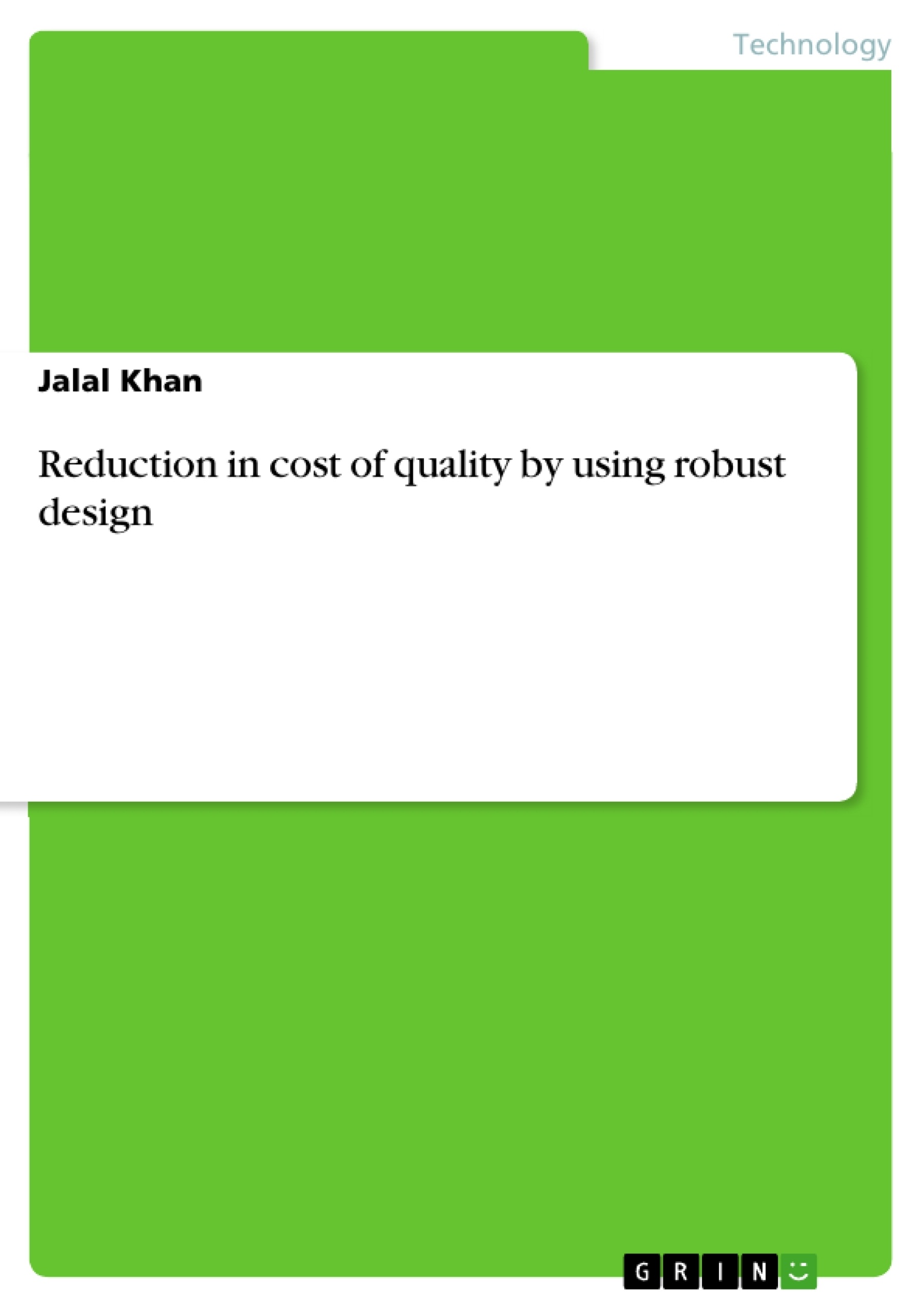The present paper proposes a systematic design framework for cost of quality that embeds Taguchi’s method and other robustness criteria to reduce the overall COQ of a product.
Robust Design is defined as reducing variation in a product without eliminating the causes of the variation. In other words, making the product or process insensitive to variation. This in turn increases the overall quality of a product making the product robust.
Inhaltsverzeichnis (Table of Contents)
- Introduction
- Literature Review
- Research Methodology
- Reduction in COQ by implementing Robust Design
- Results and Calculations
- Conclusion
- Paper Published
- References
Zielsetzung und Themenschwerpunkte (Objectives and Key Themes)
This thesis aims to develop a systematic framework for reducing the Cost of Quality (COQ) in a product by integrating Taguchi's method and robustness criteria. The study focuses on the automotive industry, using Bharat Gears Ltd. (BGL) as a case study.
- Relationship between Robust Design and Cost of Quality
- Identification and measurement of quality costs in an organization
- Impact of Robust Design on product quality and variation
- Application of Taguchi's method for reducing COQ
- Case study analysis of COQ reduction in the automotive industry
Zusammenfassung der Kapitel (Chapter Summaries)
- Introduction: This chapter introduces the concept of quality and its importance in product development. It defines Robust Design and its role in reducing variations and enhancing product quality. It also highlights the significance of measuring COQ in terms of financial impact.
- Literature Review: This chapter provides an overview of existing research on COQ and Robust Design. It explores different models for classifying and measuring COQ, including the P-A-F model and Crosby's model. It also examines the theoretical foundations of Robust Design and its benefits in reducing variations and improving quality.
- Research Methodology: This chapter outlines the research methodology employed in the study. It describes the data collection methods, the case study selection process, and the analytical techniques used to analyze the data.
- Reduction in COQ by implementing Robust Design: This chapter focuses on the implementation of Robust Design principles to reduce COQ in the case study organization. It describes the specific steps taken, the tools and techniques used, and the challenges faced during the implementation process.
- Results and Calculations: This chapter presents the findings of the research, including the quantitative and qualitative data collected. It analyzes the impact of implementing Robust Design on COQ reduction and provides evidence-based conclusions.
Schlüsselwörter (Keywords)
This study focuses on the application of Robust Design principles to reduce the Cost of Quality (COQ) in the automotive industry. Key terms include Robust Design, Cost of Quality, Taguchi's method, variation reduction, quality control, and case study analysis. The research aims to provide insights into the practical implementation of Robust Design principles and their impact on COQ reduction in a real-world setting.
- Quote paper
- Jalal Khan (Author), 2015, Reduction in cost of quality by using robust design, Munich, GRIN Verlag, https://www.grin.com/document/339506



